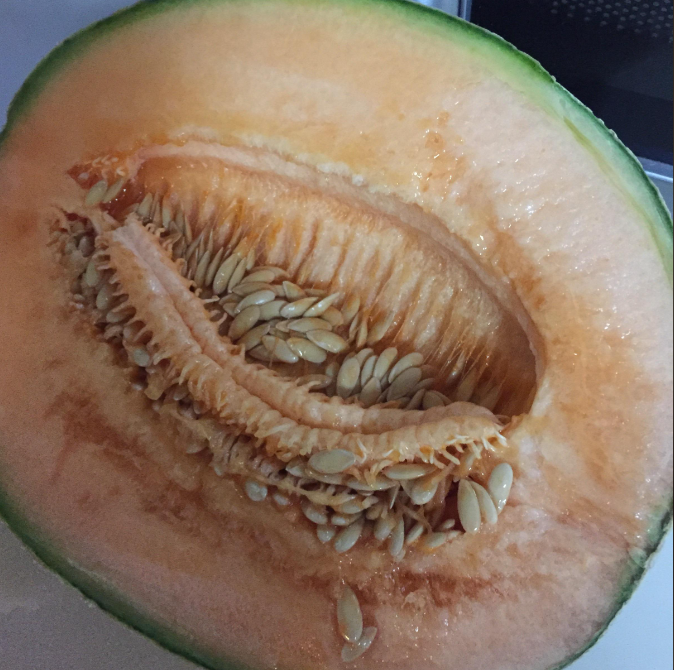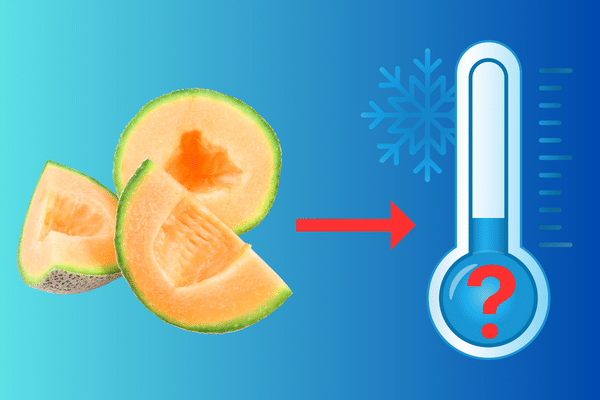Cantaloupe is a refreshing and nutritious fruit that is enjoyed by many during the warm summer months. However, when cut, it can become a breeding ground for harmful bacteria if not stored properly. Maintaining the right temperature is crucial to ensure the safety and quality of cut cantaloupe.
This article explores the maximum required cold holding temperature for cut cantaloupe and provides insights into its storage, shelf life, and signs of spoilage.
Maximum Required Cold Holding Temperature for Cut Cantaloupe?
The maximum required cold holding temperature for cut cantaloupe is 41°F (5°C) or below.
According to the United States Food and Drug Administration (FDA) Food Code, cut melons like cantaloupe are considered a potentially hazardous food (PHF) or time/temperature control for safety food (TCS). This means that they require strict temperature control to limit the growth of harmful bacteria.
The FDA Food Code states that cut melons must be held at an internal temperature of 41°F (5°C) or below to minimize the risk of pathogenic bacterial growth. Temperatures above 41°F (5°C) allow for the rapid multiplication of bacteria known as Salmonella, which can lead to foodborne illnesses.
How Long Does Cantaloupe Last in the Fridge?
Uncut, whole cantaloupe can typically last for three to five days in the refrigerator. However, once cut, the shelf life of cantaloupe is significantly reduced.
Cut cantaloupe should be consumed within two to three days when stored in the refrigerator at the proper temperature.
It’s important to note that the quality and freshness of the fruit may diminish over time, even when stored correctly.
How Do You Keep Cantaloupe Fresh Longer in the Fridge?
To maximize the shelf life of cut cantaloupe in the refrigerator, follow these tips:
- Store it in an airtight container or wrap it tightly with plastic wrap to prevent air exposure and moisture loss.
- Place the container or wrapped cantaloupe on a refrigerator shelf, rather than in the crisper drawer, where the temperature may fluctuate.
- Avoid cross-contamination by storing cut cantaloupe separately from raw meats, poultry, or seafood.
- Discard any leftover cantaloupe that has been at room temperature for more than two hours.
How Can You Tell if Cantaloupe is Gone Bad?
Even with proper storage, cantaloupe can spoil over time. Here are some signs that indicate cut cantaloupe has gone bad:

- Off odor: Fresh cantaloupe should have a pleasant, sweet aroma. If it develops an unpleasant, sour, or fermented smell, it’s time to discard it.
- Discoloration: Cut cantaloupe should have a vibrant orange color. If it turns brown, develops dark spots, or becomes slimy, it’s no longer safe to consume.
- Mold growth: The presence of any visible mold or fuzzy growth on the surface of the cantaloupe is a clear indication that it has spoiled.
- Texture changes: Fresh cantaloupe should have a firm yet juicy texture. If it becomes mushy, dry, or shriveled, it’s a sign of spoilage.
Remember, when in doubt, it’s better to err on the side of caution and discard any cut cantaloupe that appears or smells questionable to prevent potential foodborne illnesses.

